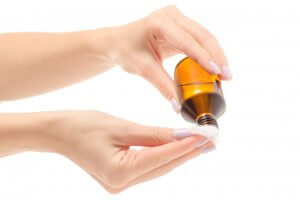Drinking Rubbing Alcohol: Risks & Dangers of Ingesting Isopropyl Alcohol

What is Rubbing Alcohol?
Isopropanol is most commonly found in rubbing alcohol, a solution typically containing about 70% isopropanol and 30% water. Isopropanol (or isopropyl alcohol) is a clear, colorless liquid with a slightly fruity odor and bitter taste. It is used in a wide variety of commercially available products such as cosmetics, lotions, aftershaves, cleaners, disinfectants, hand sanitizers, antifreezes, solvents, inks, and pharmaceuticals.
Isopropanol ingestion is the most common toxic alcohol ingestion reported to Poison Control Centers in the United States each year.1 Although most isopropanol exposures are unintentional and occur in young children less than 6 years of age, more than 4,000 cases of intentional isopropanol ingestion were reported in 2009 alone.1-2
Why do People Drink Rubbing Alcohol?
Rubbing alcohol is consumed because it is much stronger than the ethanol (the intoxicating agent produced by sugar fermentation and distillation) which is found in most common alcoholic beverages. People drink rubbing alcohol to become intoxicated, or in some cases to harm themselves. People suffering from alcoholism may turn to stronger substances such as rubbing alcohol to reach a certain level of intoxication.
Rubbing alcohol is sometimes substituted for ethanol due to its much lower cost and widespread availability. For example, a 16-ounce bottle of rubbing alcohol costs little more than one dollar and can be purchased pretty much anytime of the day at a 24-hour drug store. Rubbing alcohol is also more potent than ethanol and is very quickly absorbed into the bloodstream. But these same characteristics that allow you to get more drunk more quickly are also responsible for the extreme risks and dangers associated with drinking rubbing alcohol.
Take Our Substance Abuse Self-Assessment
Take our free, 5-minute substance abuse self-assessment below if you think you or someone you love might be struggling with substance abuse. The evaluation consists of 11 yes or no questions that are intended to be used as an informational tool to assess the severity and probability of a substance use disorder. The test is free, confidential, and no personal information is needed to receive the result.
The Risks and Dangers of Drinking Rubbing Alcohol
Drinking rubbing alcohol is much more dangerous compared to drinking ethanol. Isopropanol is more intoxicating than ethanol at comparable concentrations and is more likely to produce impaired consciousness (such as slurred speech, stumbling, and sedation), decreased body heat production, dangerously low blood pressure, and even cardiopulmonary collapse. Rubbing alcohol is rapidly absorbed by the body, with blood levels peaking between 30 minutes and 3 hours after ingestion.1 Due to the chemical makeup of rubbing alcohol it is metabolized much differently than ethanol, causing the body to become overwhelmed by toxins. Essentially, rubbing alcohol is broken down into acetone, the toxic chemical found in nail polish remover.
Acetone is a gastrointestinal irritant that can cause the following digestive tract issues:3
- Abdominal pain
- Nausea
- Vomiting blood
- Bleeding in the stomach and intestines
- Diarrhea
- Bladder rupture
Acetone also triggers severe depression of the central nervous system. This can result in the following dangerous conditions:3
- Dizziness
- Headaches
- Inebriation
- Coma
Rubbing alcohol is very dangerous to consume at any quantity. Massive ingestion is especially risky and can cause depressed cardiovascular function, internal bleeding, organ damage, shock, and even death.3
Treatment Options
Rubbing alcohol is not a substitute for liquor, wine, or beer, and under no circumstances is it intended for human consumption. If you suspect someone has consumed rubbing alcohol, whether by accident or on purpose, call 911 immediately. You can also contact the American Association of Poison Control at 1-800-222-1222 to receive immediate, expert guidance from local poison control specialists serving your area.
If you or someone you know has considered drinking rubbing alcohol because of an ongoing struggle with alcohol addiction, please contact a rehab center for the available treatment options that can help you on your path to recovery.
Sources
- Ashurst, J.V., & Nappe, T.M. (2019). Isopropanol Toxicity.
- Slaughter, R.J., Mason, R.W., Beasley, D.M., Vale, J.A., & Schep, L.J. (2014). Isopropanol poisoning. Clinical Toxicology, 52(5), 470-478.
- Ashurst, J.V., & Nappe, T.M. (2019). Isopropanol Toxicity. In: StatPearls [Internet]. Treasure Island (FL): StatPearls Publishing

